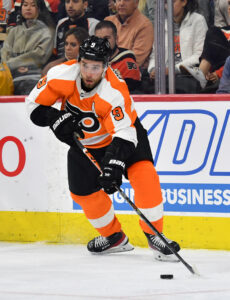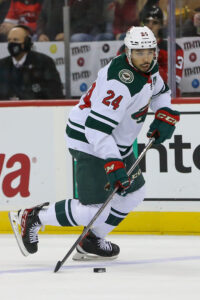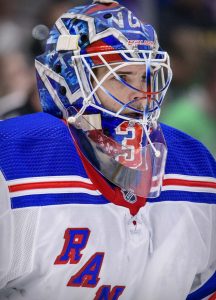Hindsight is an amazing thing, and allows us to look back and wonder “what could have been.” Though perfection is attempted, scouting and draft selection is far from an exact science, and sometimes, it doesn’t work out the way teams – or players – intended. For every Patrick Kane, there is a Patrik Stefan.
We’re looking back at the 2008 NHL Entry Draft and asking how it would shake out knowing what we do now. Will the first round remain the same, or will some late-round picks jump up to the top of the board?
The results of our redraft so far are as follows with their original draft position in parentheses:
1st Overall: Steven Stamkos, Tampa Bay Lightning (1)
2nd Overall: Drew Doughty, Los Angeles Kings (2)
3rd Overall: Roman Josi, Atlanta Thrashers (38)
4th Overall: Alex Pietrangelo, St. Louis Blues (4)
5th Overall: Erik Karlsson, Toronto Maple Leafs (15)
6th Overall: John Carlson, Columbus Blue Jackets (27)
7th Overall: Jacob Markstrom, Nashville Predators (31)
8th Overall: Braden Holtby, Phoenix Coyotes (93)
9th Overall: Jordan Eberle, New York Islanders (22)
10th Overall: Jared Spurgeon, Vancouver Canucks (156)
11th Overall: Cam Atkinson, Chicago Blackhawks (157)
12th Overall: T.J. Brodie, Buffalo Sabres (114)
13th Overall: Josh Bailey, Los Angeles Kings (9)
14th Overall: Adam Henrique, Carolina Hurricanes (82)
15th Overall: Tyler Myers, Ottawa Senators (12)
16th Overall: Gustav Nyquist, Boston Bruins (121)
17th Overall: Derek Stepan, Anaheim Ducks (51)
There aren’t too many players that represent the New York Rangers of the 2010’s better than Derek Stepan. A regular in their top-six, good for at least 50 points on a yearly basis, the center played a big role on teams that were regularly in the mix for the Stanley Cup. Of course, those dreams never came true for Stepan or the Rangers, at least not yet, but there’s no doubt the franchise was thrilled with what they received with their 51st overall selection in 2008.
In our redraft, Stepan now climbs all the way up to 17th overall, this time to the Anaheim Ducks. The team had originally used this slot to take defenseman Jake Gardiner, who ultimately never suited up for a game with them, traded to the Maple Leafs while he was still in college. Whether they would, in hindsight, prefer Gardiner or Stepan could be an interesting debate, however the results of the redraft show Stepan would be the choice.
Now, we turn our attention to the eighteenth overall pick, which belonged to the Nashville Predators. With that pick, the team looked to solidify their future in net by selecting goaltender Chet Pickard. Little did they know, another netminder in their system would burst onto the scene the following season and never look back, becoming one of the best players in the franchise’s history. Unfortunately for Pickard, not everyone can have the same career as Pekka Rinne.
Pickard was a standout for the WHL’s Tri-City Americans, spending three years in net there, his first season as the full-time starter coming in 2007-08. After becoming the first goaltender selected in the 2008 draft, Pickard returned to Tri-City for another stellar season before turning pro for the 2009-10 campaign. The goaltender struggled in his first season, playing 36 games in the AHL with the Milwaukee Admirals, but things wouldn’t get much better from there. He would spend parts of three more seasons bouncing between the ECHL and AHL, but never found much success or momentum.
Following the 2013-14 season, his last in North America, Pickard headed to Denmark for a year before moving onto the DEL in Germany for 2015-16. There, Pickard finally found success as a reliable goalie for Iserlohn, Manheim, and Wolfsburg. Pickard finally finding a consistent role as a reliable goaltender is surely good news, but having to do it over agin, its unlikely Nashville would take him in the 18th spot in the draft. Rinne aside, there are two goaltenders already taken in the re-draft with considerable success, and a few still on the board with solid NHL resumes. So, in this redraft, who would go 18th overall to the Predators?
Trade Rumors app users, click here to vote.





